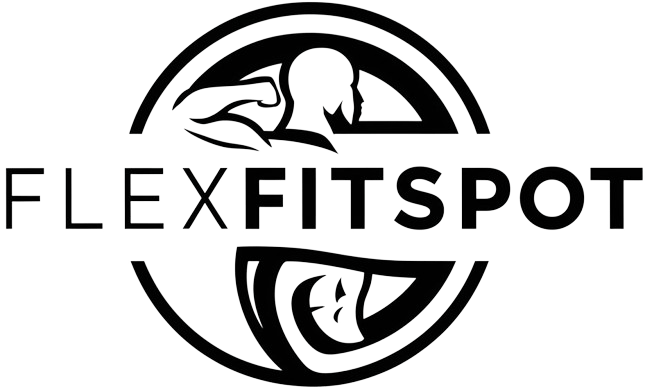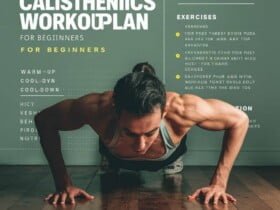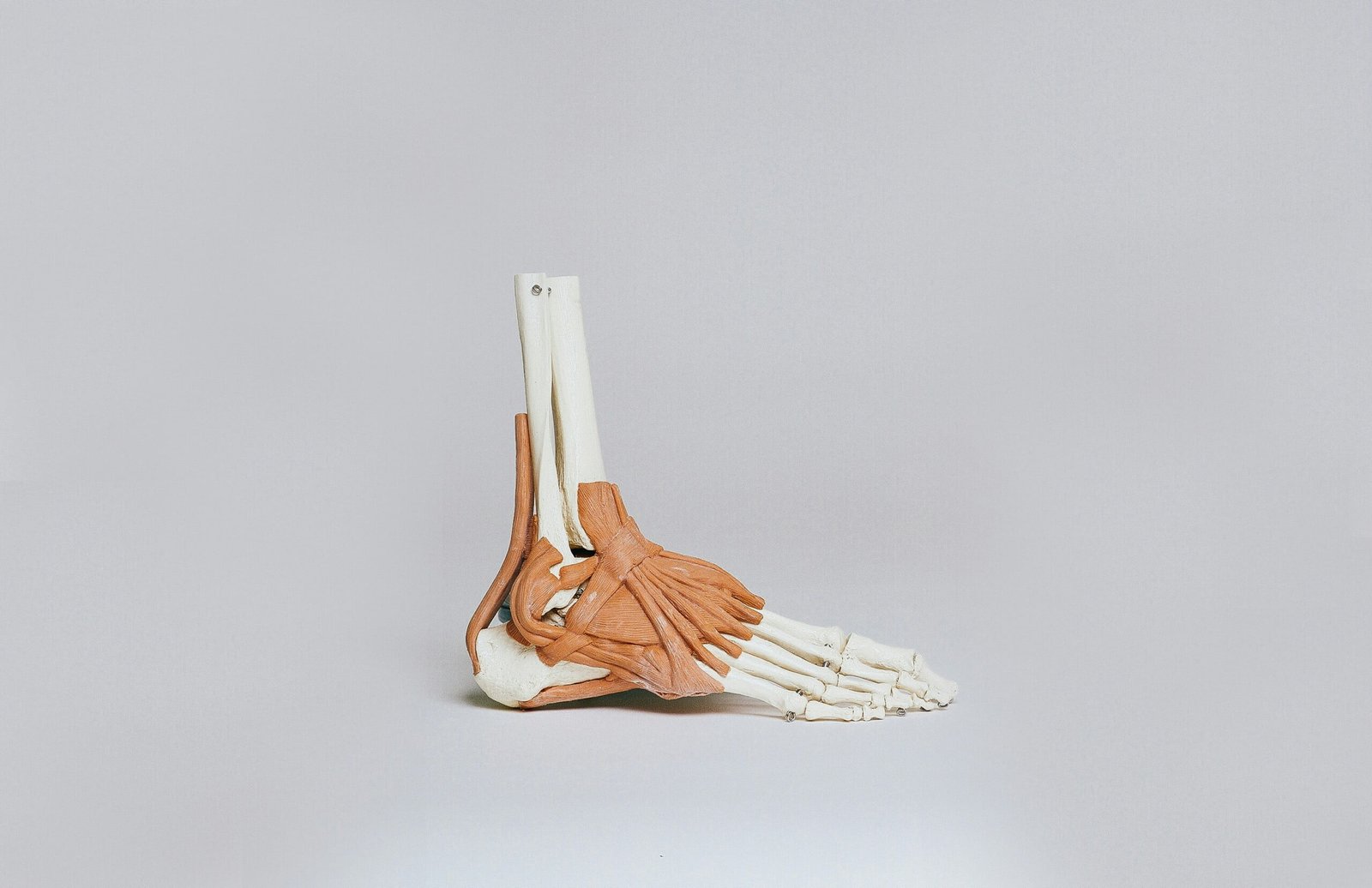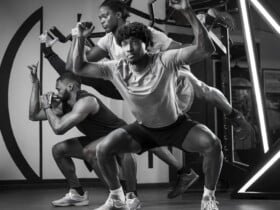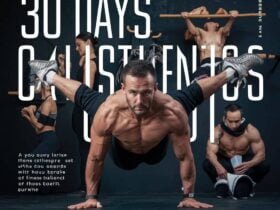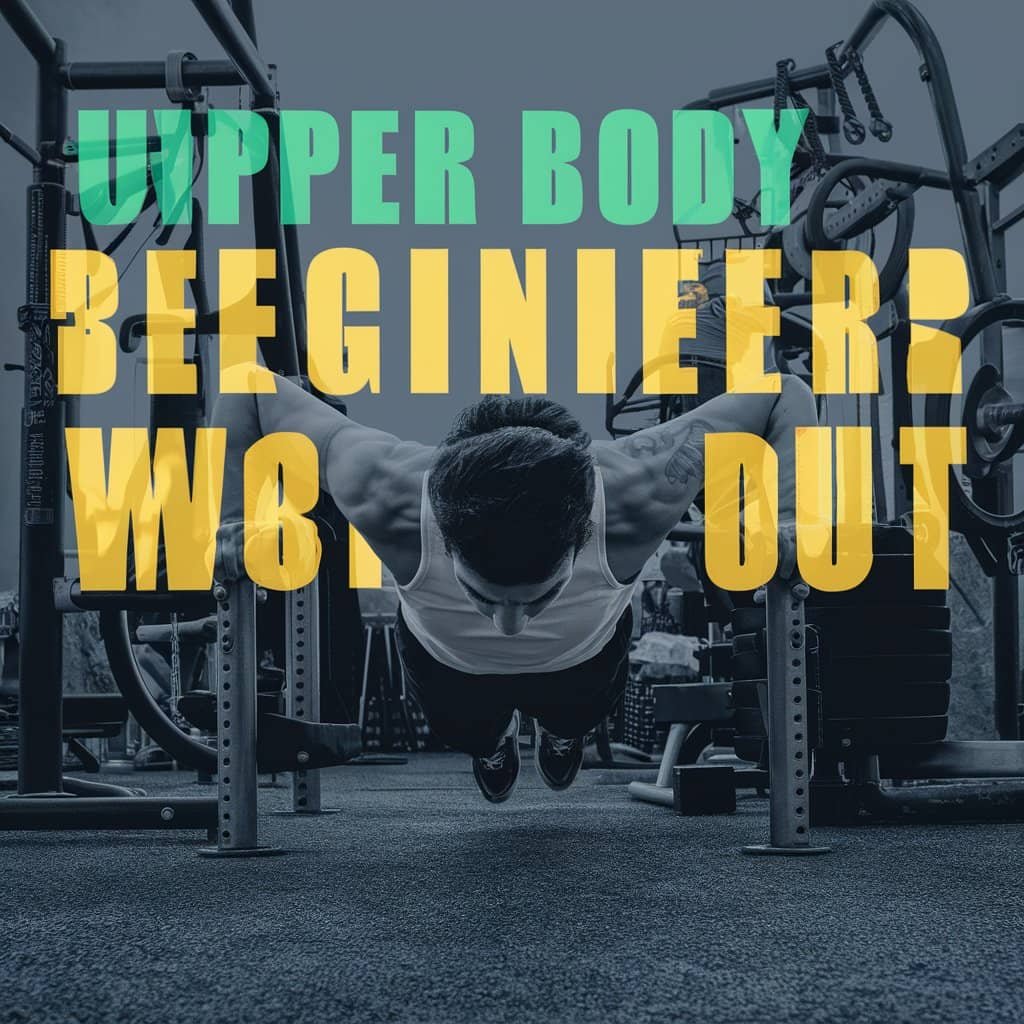Introduction to Upper Body Calisthenics Exercises
Calisthenics, a form of exercise that utilizes body weight for resistance, has garnered considerable attention for its effectiveness in building upper body strength. Unlike traditional weightlifting, calisthenics requires minimal to no equipment, making it a versatile and accessible option for fitness enthusiasts of all levels.
The fundamental principle of calisthenics revolves around leveraging one’s own body weight to perform a variety of exercises. This approach not only enhances muscle strength but also improves coordination, flexibility, and balance. By engaging multiple muscle groups simultaneously, calisthenics promotes functional fitness, which is crucial for everyday activities and overall physical well-being.
One of the primary advantages of upper body calisthenics is the minimal requirement for equipment. Exercises such as push-ups, pull-ups, and dips can be performed virtually anywhere, whether at home, in a park, or even during travel. This flexibility eliminates the need for a gym membership, making fitness more accessible and convenient.
Moreover, calisthenics is inherently adaptable, catering to individuals at various fitness levels. Beginners can start with basic movements and gradually progress to more advanced exercises as their strength and proficiency improve. This scalability ensures sustained engagement and continuous improvement, fostering a lifelong commitment to fitness.
Another significant benefit of upper body calisthenics is the enhancement of functional fitness. Unlike isolated weightlifting exercises that target specific muscles, calisthenics movements often mimic real-life actions, promoting better movement patterns and overall body mechanics. This functional approach not only boosts athletic performance but also reduces the risk of injury in daily activities.
In summary, upper body calisthenics offers a practical, efficient, and effective means of building strength and functional fitness. With its emphasis on body weight resistance, minimal equipment requirements, and adaptability, calisthenics provides a comprehensive workout solution suitable for individuals at any fitness level.
Push-Ups
The push-up is a fundamental calisthenics exercise renowned for its simplicity and effectiveness in building upper body strength. Proper form is crucial for maximizing benefits and minimizing injury risk. To perform a standard push-up, start in a plank position with hands placed shoulder-width apart, ensuring that your body forms a straight line from head to heels. Lower your body until your chest nearly touches the floor, keeping your elbows at a 45-degree angle, and then push back up to the starting position.
Various push-up variations target different muscle groups and add diversity to your workout routine. The wide grip push-up, where hands are placed wider than shoulder-width apart, emphasizes the chest muscles. Conversely, the close grip push-up, with hands placed narrower than shoulder-width, primarily targets the triceps. The diamond push-up, performed with hands forming a diamond shape beneath the chest, intensifies the focus on the triceps and inner chest.
For beginners, starting with knee push-ups or incline push-ups can help build the necessary strength. As proficiency increases, transitioning to standard push-ups and eventually to more challenging variations, such as clapping push-ups or one-arm push-ups, can provide progressive overload, which is key to muscle growth and strength gains.
Common mistakes to avoid include sagging the hips, flaring the elbows out too wide, and failing to maintain a straight line from head to heels. These errors can lead to inefficient form and potential injuries. Concentrating on quality over quantity ensures that each repetition is effective.
Incorporating push-ups into your fitness regimen can significantly enhance upper body strength, engaging muscles such as the pectorals, triceps, deltoids, and the core. This versatile exercise remains a cornerstone of calisthenics training, adaptable to any fitness level and capable of delivering robust results.
Pull-Ups and Chin-Ups
Pull-ups and chin-ups are foundational calisthenics exercises that effectively target the upper body. While these exercises share similarities, their differences lie in grip variations and the specific muscles they engage. A pull-up employs an overhand (pronated) grip, with palms facing away from the body. This variation primarily targets the upper back muscles, including the latissimus dorsi, trapezius, and rhomboids, while also engaging the biceps and forearms to a lesser extent.
In contrast, chin-ups utilize an underhand (supinated) grip, with palms facing towards the body. This grip places more emphasis on the biceps, making chin-ups slightly easier for most individuals compared to pull-ups. Both exercises, however, contribute significantly to building upper body strength, improving grip, and enhancing overall muscular endurance.
To perform a proper pull-up or chin-up, begin by hanging from a sturdy bar with your arms fully extended. Engage your core and pull your shoulder blades down and back. Initiate the movement by pulling your body upwards until your chin clears the bar. Lower yourself back to the starting position in a controlled manner. It is crucial to avoid swinging or using momentum, as this can reduce the effectiveness of the exercise and increase the risk of injury.
For those looking to increase their pull-up or chin-up repetitions, incorporating techniques such as negative reps, assisted pull-ups with resistance bands, or utilizing a spotter can be beneficial. Negative reps involve focusing on the eccentric (lowering) phase of the movement, which helps build strength over time. Resistance bands can provide the necessary support to complete additional reps, while a spotter can offer assistance and ensure proper form.
For individuals who struggle with pull-ups or chin-ups, alternative exercises such as inverted rows or lat pull-downs can serve as effective substitutes. These alternatives target similar muscle groups and can help build the strength necessary to eventually perform unassisted pull-ups or chin-ups.
Dips
Dips are a fundamental upper body calisthenics exercise that primarily targets the triceps, chest, and shoulders. There are two main variations: tricep dips and chest dips, each focusing on different muscle groups. Performing dips correctly ensures maximum benefit and reduces the risk of injury.
To perform tricep dips using parallel bars, begin by gripping the bars firmly with your arms fully extended and your body elevated. Lower your body by bending at the elbows until your upper arms are parallel to the ground. Keep your elbows close to your body to emphasize the triceps. Push yourself back up to the starting position by straightening your arms. Tricep dips can also be performed using a bench. Sit on the edge of the bench, place your hands beside your hips, and extend your legs forward. Lower your body by bending your elbows and then press back up.
Chest dips, on the other hand, are performed with a slight forward lean. This variation shifts the focus onto the chest muscles. Start by gripping the parallel bars and elevate your body. Lean slightly forward as you lower your body by bending your elbows. Ensure your elbows flare out slightly to engage the chest muscles effectively. Push back up to return to the starting position.
Progression in dips can be achieved by adding resistance or adopting more challenging positions. For added resistance, you can use a dip belt with weights or hold a dumbbell between your feet. To increase difficulty without additional equipment, try performing dips with your legs elevated on a bench or step. This increases the load on your upper body, making the exercise more challenging.
Incorporating dips into your calisthenics routine can significantly enhance upper body strength and muscle definition. Consistency and proper technique are key to reaping the full benefits of this versatile exercise.
Handstand Push-Ups
Handstand push-ups are a formidable upper body calisthenics exercise, requiring both strength and balance. This advanced movement primarily targets the shoulders, triceps, and upper chest, while also engaging the core and stabilizing muscles. To perform handstand push-ups effectively, one must first master the handstand position itself.
Begin with wall-supported handstands, which provide the necessary support to build confidence and strength. Start by placing your hands shoulder-width apart on the ground, kick up into a handstand against a wall, and maintain a tight core. Once comfortable holding this position, progress to performing push-ups by lowering your head towards the ground and pressing back up. Ensure to engage your shoulders and triceps throughout the movement to maximize muscle activation and prevent injury.
As you gain strength and stability, incrementally reduce reliance on the wall by practicing freestanding handstands. This progression not only hones balance but also demands greater muscle control. To achieve a freestanding handstand push-up, follow the same principles: lower your head towards the ground in a controlled manner, then press back up using the strength of your shoulders and triceps.
It is crucial to practice handstand push-ups with caution. Warm up thoroughly to prepare your muscles and joints, paying particular attention to your wrists and shoulders. Incorporate mobility exercises and stretches to enhance flexibility and reduce the risk of injury. Additionally, engage your core throughout the exercise to maintain stability and alignment.
Incorporating handstand push-ups into your calisthenics routine can significantly improve upper body strength and balance. By progressing from wall-supported to freestanding variations, you can safely and effectively challenge your muscles, leading to impressive strength gains and enhanced physical capabilities.
Pike Push-Ups
Pike push-ups serve as an excellent preparatory exercise for those aiming to master handstand push-ups. This upper body calisthenics exercise primarily targets the shoulders, triceps, and upper chest, making it an integral part of any strength-building routine. The form is crucial to ensure effectiveness and to prevent injury.
To perform pike push-ups, start in a downward dog position with your hands and feet on the ground, forming an inverted V-shape with your body. Your hands should be shoulder-width apart, and your feet should be hip-width apart. From this position, bend your elbows and lower your head towards the ground, aiming to touch your forehead to the floor. Push back up to the starting position, ensuring that your elbows remain aligned with your wrists throughout the movement.
The primary muscles engaged during pike push-ups are the deltoids (shoulders), triceps, and upper pectorals (chest). This exercise also activates the core and stabilizing muscles, offering a comprehensive upper body workout. For those new to pike push-ups or seeking a modification, consider bending your knees slightly to reduce the angle and make the movement less challenging. Alternatively, performing the exercise with hands elevated on a bench or step can also decrease the intensity.
To increase the difficulty of pike push-ups, you can elevate your feet on a sturdy platform or perform the exercise on your fingertips to engage the stabilizing muscles even more. As you progress, gradually work towards achieving a full handstand push-up by incorporating more advanced variations into your routine.
Incorporating pike push-ups into your workout regimen will not only enhance your upper body strength but also pave the way for more advanced calisthenics exercises, such as handstand push-ups. Consistent practice and proper form will yield significant improvements in shoulder stability, tricep strength, and overall upper body endurance.
Inverted Rows
The inverted row is a versatile and highly effective calisthenics exercise that primarily targets the back and biceps. To perform this exercise, you will need a horizontal bar or gymnastic rings. Begin by positioning yourself underneath the bar or rings, lying on your back. Grasp the bar or rings with an overhand grip, ensuring your hands are slightly wider than shoulder-width apart. Keep your body in a straight line from head to heels, engaging your core and glutes. This is your starting position.
Next, initiate the movement by pulling your chest towards the bar or rings, retracting your shoulder blades and keeping your elbows close to your body. Hold the top position briefly, ensuring maximum contraction of the back muscles, before slowly lowering yourself back to the starting position. Repeat this motion for the desired number of repetitions. The inverted row is an excellent exercise for developing back strength and improving bicep endurance.
One of the key benefits of the inverted row is its adaptability. To increase the intensity, elevate your feet on a bench or box, which shifts more body weight onto your upper body. For beginners or those looking to decrease the difficulty, lower the height of the bar or rings, allowing for a more vertical body position. Additionally, varying your grip width can target different muscle groups within the back, providing a comprehensive workout.
Maintaining proper form is crucial to avoid injury and maximize the effectiveness of the exercise. Focus on keeping a rigid, straight body line throughout the movement. Avoid letting your hips sag or your lower back arch excessively. Engage your core and glutes to maintain stability and control. Furthermore, ensure that the movement is slow and controlled, emphasizing the muscle contraction rather than using momentum to complete repetitions.
Incorporating inverted rows into your workout routine can significantly enhance your upper body strength, particularly in the back and biceps. By adjusting the intensity and maintaining proper form, you can reap the full benefits of this powerful calisthenics exercise.
Bodyweight Tricep Extensions
Bodyweight tricep extensions are an effective exercise for strengthening the triceps, which play a crucial role in many upper body movements. This exercise can be performed using various equipment such as a bar, rings, or even a bench, making it versatile and accessible. Tricep strength is essential for overall upper body strength, contributing significantly to pushing movements and shoulder stability.
To perform bodyweight tricep extensions using a bar, start by setting the bar at waist height. Stand facing the bar, gripping it with your hands shoulder-width apart. Keep your body straight and lean slightly forward. Slowly lower your body by bending the elbows and bringing your head towards the bar. Ensure that your elbows stay close to your body to maximize tricep engagement. Push back up to the starting position, extending your elbows fully.
For those using rings, the exercise is similar. Adjust the rings to waist height and grip them firmly. Keep your body straight and lean forward slightly. Lower your body by bending the elbows, keeping them close to your sides, and then push back up. Rings add an element of instability, which can further engage the triceps and other stabilizing muscles.
If you prefer to use a bench, place your hands on the edge of the bench with your fingers pointing forward. Extend your legs out in front of you, keeping your body straight. Lower your body by bending the elbows, and then push back up to the starting position. This variation can be easier for beginners due to the fixed support of the bench.
To increase the difficulty, you can place your feet on an elevated surface or use a lower bar or rings. Conversely, to decrease the difficulty, use a higher bar or rings or keep your feet on the ground when using a bench. Common form errors include flaring the elbows out too much, arching the back, or not lowering the body enough. Maintaining proper form is crucial for safety and effectiveness.
Plank to Push-Up
The plank to push-up exercise is a dynamic movement that bridges the gap between static core stability exercises and dynamic upper body strength work. This exercise is highly effective for building both core and upper body strength, engaging muscles in the chest, shoulders, triceps, and abdominals.
To perform a plank to push-up correctly, start in a forearm plank position. Your elbows should be directly under your shoulders, and your body should form a straight line from head to heels. Engage your core to maintain this alignment. Transition into a push-up by extending one arm at a time to lift your body into a high plank or push-up position, with your hands directly under your shoulders. Perform a push-up by lowering your chest towards the ground, bending your elbows at a 45-degree angle, and then pushing back up to the starting position. Reverse the movement to return to the forearm plank.
There are several progressions and variations to tailor the plank to push-up for different fitness levels. Beginners can start by performing the movement on their knees to reduce the load on the upper body. As strength and stability improve, transitioning to the toes and increasing the number of repetitions can add a challenge. Advanced practitioners can incorporate variations such as adding a knee tuck or incorporating a side plank at the top of the movement to further engage the core and obliques.
Maintaining proper form is crucial to reap the full benefits and avoid injury. Common mistakes include letting the hips sag or pike, which can strain the lower back, and flaring the elbows out too wide during the push-up, which can stress the shoulders. Focus on keeping a straight body line, engaging the core, and controlling the movement smoothly through each transition.
Incorporating the plank to push-up into your upper body calisthenics routine can significantly enhance your strength and stability. It’s a versatile exercise that challenges multiple muscle groups simultaneously, making it a valuable addition to any strength training regimen.
Conclusion and Tips for Calisthenics Success
Incorporating upper body calisthenics exercises into your fitness routine is crucial for building strength, enhancing muscle endurance, and improving overall physical health. These exercises, which utilize body weight for resistance, can be performed virtually anywhere, making them accessible and convenient for individuals at any fitness level.
Consistency is key to achieving success in any fitness regimen. Establish a regular workout schedule that includes a variety of calisthenics exercises to target different muscle groups. Aim to perform these exercises at least three times a week, gradually increasing the intensity and volume as your strength improves.
Proper recovery is essential to prevent injury and promote muscle growth. Ensure that you allow adequate rest between workout sessions, especially if you are incorporating high-intensity exercises. Incorporate stretching and mobility exercises into your routine to maintain flexibility and reduce muscle soreness.
Progression is another critical factor for continual improvement. Start with basic exercises and gradually progress to more challenging variations as your strength and technique improve. For example, begin with standard push-ups and advance to more demanding forms such as archer push-ups or one-arm push-ups over time.
Creating a balanced workout plan is vital for overall strength development. Include a mix of pushing and pulling exercises to ensure all major muscle groups are adequately targeted. Combining exercises such as pull-ups, dips, push-ups, and planks will help create a comprehensive upper body workout.
Listening to your body is paramount to prevent overtraining and injuries. Pay attention to any signs of discomfort or pain and adjust your workout intensity accordingly. It is crucial to prioritize proper form and technique over the number of repetitions to minimize the risk of injury.
By integrating these upper body calisthenics exercises into your fitness routine and adhering to these tips, you can enhance your strength, promote muscle growth, and achieve your fitness goals effectively and safely.
